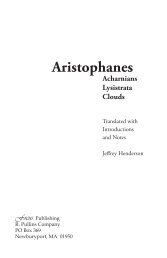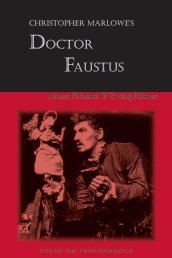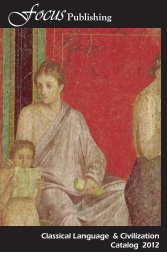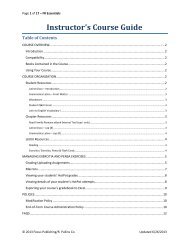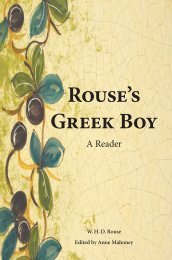William Shakespeare - Focus Publishing
William Shakespeare - Focus Publishing
William Shakespeare - Focus Publishing
You also want an ePaper? Increase the reach of your titles
YUMPU automatically turns print PDFs into web optimized ePapers that Google loves.
INTRODUCTION TO THE FOCUS EDITION:<br />
PERFORMANCE CONSIDERATIONS AND HISTORY<br />
What happens to us when we fall into a dream Or when we fall into<br />
imagination, especially the imaginative experience of a play And what happens to<br />
us when we fall into love What kind of transformative experience is it And how<br />
are these three mysterious states of consciousness related to one another How are<br />
they simultaneously at the heart of human experience and at the edge of human<br />
understanding, “my own, and not my own,” as Helena guesses in the midst of her<br />
fall <strong>Shakespeare</strong>’s A Midsummer Night’s Dream explores those multiple threads<br />
of inclusiveness and metamorphosis that weave together these three experiences,<br />
and in so doing, weave together one of <strong>Shakespeare</strong>’s most delightful and haunting<br />
plays. One of the best ways to explore these questions is to follow the strange<br />
transformations the play itself has experienced in the more than four hundred years<br />
since it was first performed. Every generation has tried to make sense of this play, a<br />
play that insistently resists all sense, all reason. We should remember that Bottom<br />
himself, an actor of sorts, reminds us that “reason and love keep little company<br />
together nowadays.” And yet, as this play keeps insisting, the line between reason<br />
and imagination becomes increasingly blurred the closer we get to what we think is<br />
that line—a kind of <strong>Shakespeare</strong>an twist to the Heisenberg uncertainty principle.<br />
Indeed, this play, more than four hundred years after its inception, remains our<br />
own, and not our own.<br />
And yet despite, or perhaps because of, that equivocating volatility at its center,<br />
A Midsummer Night’s Dream is one of the most popular plays in the <strong>Shakespeare</strong>an<br />
canon. In the U.S., as well as in the U.K., the play has been a staple of <strong>Shakespeare</strong><br />
summer festivals, community theaters, and, of course, school performances. That<br />
enthusiasm for the play is becoming increasingly global. Joseph Summers speaks for<br />
many when he notes that “[m]ost of the critics and scholars who have written about<br />
A Midsummer Night’s Dream have united to praise it: a great many of them love<br />
it.” 1 Producers and directors now refer to A Midsummer Night’s Dream, somewhat<br />
indecorously, as a “bums in the seats” play, a play guaranteed to succeed at the box<br />
office. The play is justly celebrated for its astonishing synthesis of multiple plots that<br />
seem to have nothing to do with one another; or of four groups of characters that<br />
seem to exist on contradictory planes of imaginative “reality”; or of wildly disparate<br />
kinds of language—prose, blank verse, rhyme, pentameter, tetrameter, trimeter—<br />
1 Joseph H. Summers, Dreams of Love and Power: On <strong>Shakespeare</strong>’s Plays (New York: Oxford UP,<br />
1984), 1.<br />
xi






